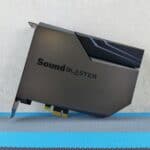If the DRAM light on your motherboard is on, it can indicate a potential issue with the RAM modules in your computer system. The DRAM light is a diagnostic tool that alerts you when the system cannot detect or properly access the RAM, which is vital for the computer to operate correctly. A lit DRAM light often results in the computer not booting up, as the system requires RAM to load the operating system and run applications.
To resolve issues indicated by the DRAM light, you need to check and ensure that the RAM modules are correctly installed and functioning. Sometimes this means reseating the RAM, checking for compatibility, or adjusting BIOS settings. Addressing these problems can restore your system to working order. Diagnostic lights like the DRAM indicator provide a valuable first step in troubleshooting.
Troubleshooting the DRAM Light: What You Need to Know
If you see a DRAM light glowing on your computer motherboard, it usually means there’s a problem with your computer’s RAM (Random Access Memory). This guide will help you understand what that light means and how to fix the issue.
What is the DRAM light for?
Motherboards usually have a LED light dedicated to the DRAM (also known as RAM). It lights up during the initial boot sequence and turns off when the computer recognizes the RAM correctly. However, if there’s a problem with the RAM, the DRAM light stays on, alerting you to an issue.
Reasons the DRAM light is on
Here are the most common causes of a persistent DRAM light:
- Incorrectly installed RAM: Ensure your RAM modules are fully and correctly seated in their slots. Check for any misalignment or gaps.
- Faulty RAM: One or more of your RAM sticks may be damaged or malfunctioning.
- Incompatible RAM: Make sure the RAM you’re using is compatible with your motherboard. Check your motherboard’s documentation for its supported RAM specifications.
- RAM slots: There’s a possibility that your motherboard’s RAM slots are damaged or dusty.
- Other Hardware issues: In rare cases, problems with your power supply unit (PSU) or CPU can also trigger the DRAM light.
What Do the Different DRAM Light Colors Mean?
While not every motherboard is the same, here’s a general idea of what the most common DRAM light colors mean.
| Color | Possible Meaning |
|---|---|
| Red | A serious problem with the RAM. Could be bad RAM, incompatible RAM, or a motherboard issue. |
| Yellow/Orange | A less serious issue with the RAM. Sometimes this indicates a warning, not a total failure. |
Troubleshooting Tips
If you see a DRAM light, here are some things to try:
- Reseat the RAM: Power down the computer completely, remove the RAM sticks, and carefully put them back in. Make sure you hear a ‘click’ when they’re fully seated.
- Test RAM One Stick at a Time: If you have multiple sticks, try removing them and testing your system with only one installed to see if you can isolate a bad stick.
- Clear CMOS: This resets your motherboard’s settings. Refer to your motherboard’s manual for instructions as the process varies between models.
- Check RAM Compatibility: Ensure that the RAM you’re using is compatible with your motherboard. Check the manufacturer’s website for a list of compatible RAM.
Important: Always turn your computer off and unplug it before working on it. It’s also a good idea to ground yourself to prevent static damage.
DRAM Light On Motherboard: Troubleshooting Guide
| Condition | Light Behavior | Possible Cause(s) | Troubleshooting Steps |
|---|---|---|---|
| DRAM Light ON, System Doesn’t Boot | Solid Red/Orange | – Improperly seated RAM – Faulty RAM module(s) – Incompatible RAM – BIOS issue – Power supply problem | 1. Reinstall RAM modules firmly, ensuring proper latching. 2. Test each RAM module individually in different slots. 3. Check RAM compatibility with your motherboard model. 4. Update BIOS to the latest version. 5. Test with a different power supply (if possible). |
| DRAM Light FLASHING, System Doesn’t Boot | Blinking Red/Orange | – RAM timing or voltage issue – Overclocking instability – BIOS corrupted | 1. Clear CMOS settings to reset BIOS defaults. 2. Try disabling XMP or manually adjusting RAM timings and voltage (advanced users only). 3. Reflash BIOS with a verified backup or update to the latest version. |
| DRAM Light ON, System Boots Occasionally | Solid Red/Orange | – Intermittent RAM or motherboard connection – Minor BIOS inconsistency | 1. Clean RAM and motherboard slots with compressed air. 2. Try different RAM slots. 3. Update BIOS to the latest version. |
| DRAM Light OFF, System Doesn’t Boot | No light | – Not related to RAM (check CPU, GPU, or other component lights) | Refer to motherboard manual or manufacturer support for further troubleshooting based on other indicators. |
Note: Different motherboard makers may have different meanings/codes assigned with their DRAM light setups. These are the most common meanings. Check your motherboard booklet or manual online to tell exactly what the meaning of your light color / error code is.
Troubleshooting Steps
Here’s what to try to fix the DRAM light issue:
- Reseat the RAM: Remove your RAM sticks. Carefully clean the contacts with a soft cloth or isopropyl alcohol. Then reinsert them, ensuring they click into place firmly.
- Test with individual RAM sticks: If you have multiple RAM sticks, remove all but one and restart your computer. If the DRAM light disappears, one of the other sticks is faulty. Repeat with each stick to identify the faulty one.
- Check your motherboard manual: Refer to your motherboard’s manual for RAM installation instructions and a compatibility list.
- Clean the RAM slots: Use compressed air or a soft brush to clean dust from the RAM slots.
- Try different RAM slots: If available, try inserting your RAM into other motherboard slots.
- Test with known-good RAM: If possible, try using different RAM sticks that are known to be working.
Additional Tips:
- Check for bent CPU pins: A damaged CPU or bent pins inside the CPU socket can sometimes cause RAM-related issues. Inspect your CPU socket carefully.
- Update your BIOS: Updating your BIOS may sometimes resolve RAM compatibility problems. Check your motherboard manufacturer’s website for the latest BIOS version.
Table: Troubleshooting Quick Reference
| Problem | Possible Solutions |
|---|---|
| Incorrect RAM Installation | Reseat the RAM modules. Ensure they are fully inserted and latched correctly. |
| Faulty RAM | Test with individual RAM sticks. Replace faulty RAM. |
| Incompatible RAM | Check motherboard documentation for supported RAM specifications. Use compatible RAM. |
| Damaged or Dusty RAM Slots | Clean the RAM slots. Try using different slots. |
| Other Hardware Issues | Test with a different power supply unit (PSU). Check for CPU issues. |
If all these steps fail, consider consulting a professional computer technician.
Key Takeaways
- The DRAM light signals issues with RAM detection or performance.
- Proper RAM module installation and function are crucial.
- Diagnostic lights facilitate initial troubleshooting.
Understanding DRAM Light Indicators
When a DRAM light on a motherboard lights up, it’s signaling a potential issue with the RAM. These indicators help maintain system stability by alerting users to hardware issues such as power supply problems, improper installation, or incompatibility.
Indicator Colors and Meanings
- Red Light: Typically, points to a serious memory issue.
- Yellow/Orange Light: Often signifies a power-related problem.
- White: Usually indicates normal operation but can depend on the motherboard brand.
Common Causes of DRAM Light Issues
- Incompatible RAM Modules: Using RAM not supported by the motherboard may trigger the light.
- Faulty RAM Module: A defective stick of RAM can be the culprit.
- Incorrect Placement of RAM: If RAM sticks are not seated properly in their slots, the DRAM light might come on.
- Insufficient Power Supply: A weak or failing power supply can cause the DRAM light to illuminate.
- Improper Installation: Not securing power connections can lead to errors.
- CMOS/BIOS Settings: Incorrect BIOS settings can cause RAM issues, reflected by the DRAM light.
- Hardware Issues: Damage to the motherboard itself may be indicated by the DRAM light.
Each cause can affect the motherboard and the stability of the entire system and may require specific fixes such as reseating the RAM, replacing components, or updating BIOS settings.







